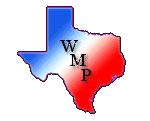THIRD TEXAS CAVALRY, ARIZONA BRIGADE. On May 29, 1862, Lt. Col. John Robert Baylor received authorization from the Confederate War Department to raise “five battalions of Partisan Rangers of six companies each” for what would become known as the Arizona Brigade. The government would pay volunteers a bounty, but expected them to furnish their own arms, equipment, and horses. The purpose of the brigade would be to retake the southwestern territories for the Confederacy, and its ranks would be made up of Texans recently returned from fighting in Arizona and territorial volunteers who had joined the Confederate command at Mesilla. George Madison, former deputy sheriff of Tucson, organized one of the battalions with companies from Burnet, San Saba, and Bell counties. Company B, organized in the San Antonio area, reenlisted many Arizona veterans as well as members of the local Tejano community. When Colonel Baylor lost command of the brigade because his controversial policies toward the Apaches in Arizona became public, Maj. Gen. John Magruder reorganized the small incomplete battalions into three regiments. Madison’s Battalion became part of the Third Texas Cavalry, Arizona Brigade. Three additional companies known as Coast Guards because they had served in defense of the Galveston area for over a year also joined the Third. Hendricks’s company from Denton, Woods’s company from Robertson and Milam counties, and the Arizona Scouts completed the regiment. For promotion to colonel of the Third Texas Cavalry, Arizona Brigade, General Magruder chose a member of his own staff, a thirty-year-old Virginian, Capt. Joseph Phillips.
Phillips’s regiment left for Louisiana on April 24, 1863, and was accompanied by Col. Barton W. Stone‘s Second Texas Partisan Rangers. They were assigned to Col. James Major‘s Second Texas Cavalry Brigade. In their first action, the Third Cavalry raided the town of Plaquemine and seized three steamers, two steam flats, approximately 100 bales of cotton, and a quantity of commissary stores. In June they took part in the assault on Fort Butler, a Union earthwork at Donaldsonville. Colonel Phillips fell dead in an unsuccessful attempt to breach the walls of the fort. George Madison, wounded in the assault, took command of the regiment. Through the rest of 1863 they continued to operate in the bayou country and took part in battles at Stirling’s Plantation and Bayou Bourbeau.
In December1863 the regiment returned to Texas and made camp at Galveston to assist in the defense against a Union expedition advancing up the coast from Brownsville. They remained in Galveston until March 1864, when the Second Texas Cavalry Brigade again marched into Louisiana to take part in the Red River campaign. During the campaign, they fought in battles at Mansfield, Pleasant Hill, Monett’s Ferry, and Yellow Bayou. When Gen. Nathaniel Banks‘s Union forces began its retreat across the Atchafalaya River, Madison’s regiment followed to harass the enemy and engaged the Union rear guard in several skirmishes. In September 1864 the regiment marched to Arkansas with the cavalry brigade and returned to Texas in December. They remained in the Houston area until the surrender of the Trans-Mississippi Department on May 26, 1865. The regiments that had once formed Major’s brigade assembled and mustered out of service at Hempstead. Under the conditions of surrender, the men retained their side arms, personal baggage, and their horses. George Madison, so often described as a daring and courageous commander, completely disappeared following the surrender of his regiment.
BIBLIOGRAPHY:
Alwyn Barr, “Texas Losses in the Red River Campaign, 1864,” Texas Military History 3(Summer 1963). George W. Baylor, John Robert Baylor: Confederate Governor of Arizona (ed. Odie B. Faulk [Tucson, Arizona: Arizona Pioneers’ Historical Society, 1966]). Confederate Muster Rolls for Lane’s, Stone’s, Baylor’s, and Phillips’s Texas Cavalry, Military Records Section, National Archives and Records Service, Washington. Correspondence File, Virginia Historical Society, Richmond, Virginia (Joseph Phillips). Morgan Wolfe Merrick, From Desert to Bayou:The Civil War Journal and Sketches of Morgan Wolfe Merrick (ed. Jerry Thompson [El Paso: Texas Western Press, 1991]). Official Records of the Union and Confederate Navies in the War of the Rebellion (30 vols.,Washington: GPO, 1894–1922). Regimental Returns for Lane’s, Stone’s, Baylor’s, and Phillips’s Texas Cavalry, Military Records Section, National Archives and Records Service, Washington. Richard Taylor, Destruction and Reconstruction: Personal Experiences of the Late War (New York: Appleton, 1879; rpt., Alexandria, Virginia: Time-Life Books, 1983). The War of the Rebellion: A Compilation of the Official Records of the Union and Confederate Armies (Washington: GPO, 1880–1901).
James Matthews
WhenSee related articles by:
Citation
The following, adapted from the Chicago Manual of Style, 15th edition, is the preferred citation for this article.
James Matthews, “THIRD TEXAS CAVALRY, ARIZONA BRIGADE,” Handbook of Texas Online (http://www.tshaonline.org/handbook/online/articles/qkt15), accessed February 11, 2015. Uploaded on April 11, 2011. Modified on June 8, 2011. Published by the Texas State Historical Association.
From <https://www.tshaonline.org/handbook/online/articles/qkt15>
Williams, McClure & Parmelee is dedicated to high quality legal representation of businesses and insurance companies in a variety of matters. We are experienced Texas civil litigation attorneys based in Fort Worth who know Texas courts and Texas law. For more information, please contact the law firm at 817-335-8800. The firm’s new office location is 5601 Bridge Street, Suite 300, Fort Worth, Texas 76112.


![texas[2]](https://texasdefensecounsel.com/wp-content/uploads/2014/02/texas2.gif)